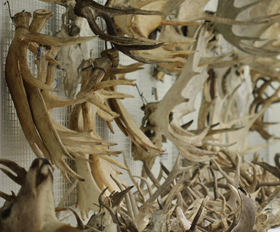How do Lego cars evolve?
 The ESEB conference this August in Lisbon was not only about Drosophila and #superbock.
The ESEB conference this August in Lisbon was not only about Drosophila and #superbock.
Among the useful discussions and the interesting talks, a definite highlight came from our very own Kilkenny scaling man all about time perception and comparative analysis… Argh no I missed that one – apparently there was even a realistic Tiger Beetle hunting impression! There were at least eight overlapping talks at any one time and, as I had already seen Kevin’s talk, I went to listen to Folmer Bokma’s insightful talk instead.
I felt Bokma’s talk was a good follow-up to Gene Hunt’s excellent talk on gradualism vs. stasis which he demonstrated through his careful study of the Ostracod fossil record, recently published in the excellent August issue of Methods in Ecology and Evolution. By means of a lengthy introduction with citation of more or less unknown people such as H. Falconer and C. Darwin, Bokma emphasised the fact that examples of evolutionary stasis are well known from the fossil record and that ideas of species undergoing rapid adaptations that were not specifically linked to environmental changes have been around since the 19th century.
Bokma argued that trait co-adaptation is an important source of evolutionary changes. He cleverly illustrated this argument by means of a Lego car; I always think that using something other than just slides in a presentation greatly improves the talk! He argued that changes in colour or shape attributes can happen “easily” over a short evolutionary period as an adaptation to environmental changes. For example, characteristics of fur in Vulpes vulpes/lagopus foxes (the colour of the Lego car) or beak sizes in Darwin’s finches (the windscreen of the Lego car) have evolved to increase the fitness of the individuals living in particular environmental conditions.
But things get trickier when it comes to major changes or adaptations. Bokma illustrated this idea by trying to change the overall shape of the car (like going from a regular car to a truck). As soon as he started to remove one wheel, the car totally lost its fitness! For non-Lego fans he also gave the example of enzymatic reactions in endotherms: if just one enzyme evolves to be more active at a temperature different to normal body temperature, then there is no increase in fitness for the organism (and probably a decrease as that precise enzyme will be less efficient). It is only when all enzymes co-evolve to be more active at a different body temperature that there might be an increase of fitness for an individual. Bokma used this example to emphasise the irreversibility of evolution and how lineages can get stuck in “evolutionary dead-ends”. In response to H. Falconer’s comment to Darwin (1862) that the Elephant remains “unchangeable & unchanged”, Bokma argued that it might be “easy” (in an evolutionary way) to become an elephant but once you’re there, climbing into trees or crawling underground becomes tricky. So for these bigger evolutionary changes (the “jumps” in punctuated equilibrium theory), one needs a “genetic revolution”; evolving from a flightless theropod to a turkey involves co-adaptation of more than just locomotory characters. There is a strong irreversibility component to evolution.
While some people were kind of miffed by Bokma’s talk and started a polite but energetic debate involving genetic mumbo jumbo, I just thought that his talk was a great illustration of the problem of stasis and jumps in evolution. As Gene Hunt demonstrated, evolutionary stasis and jumps are clearly dominant in the history of life but they are trickier to explain than gradualist evolution. However, to be objective I have to agree with some of the general comments on Bokma’s talk; “So what? We already knew that.” It reminded me of S.J. Gould’s excellent review on part of this idea in the Panda’s Thumb (1980): The Return of the Hopeful Monster. So yes, we do already know about the ideas Bokma presented and he didn’t bring any staggering new insights but I believe he illustrated it with talent and brio! And perhaps I should mention that I can’t be completely objective here; I just love Lego, sorry.
Photo credit: Thomas Guillerme.
